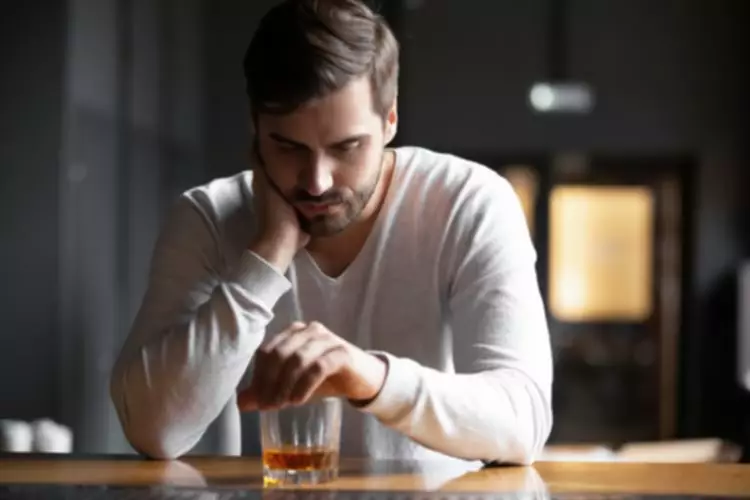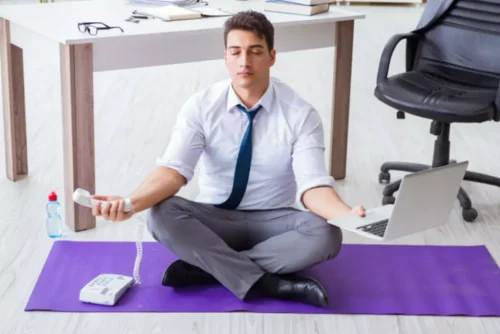
People who regularly drink alcohol are 25% more likely to have obstructive sleep apnea, although the connection may be partly due to other shared risk factors such as obesity. However, once the body realizes it’s had too much slow wave sleep, the homeostatic drive compensates by allowing us less deep sleep in the second half of the night. People who consistently drink too much alcohol may eventually build up a tolerance to its initial sedative effects. Studies of chronic alcohol users have found that these individuals typically experience disrupted sleep patterns with less slow wave sleep and more REM sleep.
Alcohol’s Effects on Hormone Function
The study had several methodological limitations, including no screening for occult sleep disorders, poor outcome measure selection, and no active control group. With continued consumption just before bedtime, alcohol’s sleep-inducing effect may decrease as its disruptive effects continue or increase. The sleep disruption resulting from alcohol use may lead to daytime fatigue and sleepiness. The elderly are at particular risk for alcohol-related sleep disorders, because they achieve higher levels of alcohol in the blood and brain than do younger adults after consuming an equivalent dose. Bedtime alcohol consumption among older adults may lead to unsteadiness if walking is attempted during the night, with increased risk of falls and injuries.
- But for many people, having one or two drinks before bed doesn’t necessarily lead to the same headaches, grogginess, or fatigue as a full-on night out.
- Sleep apnea, a disorder characterized by halted breathing for short periods while you sleep, may lead to high blood pressure, stroke, or memory loss.
- Similarly, poor sleep quality during abstinence also contributes to relapse 44, 46, 195.
- In the latter case, the different perceptions of alcohol’s effects may result from differential expectations regarding alcohol’s effects.
- The authors suggest that lower SCN levels of alcohol during the advance portion of the phase-response curve, or an acute tolerance to the effects of alcohol on phase-resetting (as demonstrated in vitro, (44)), could be responsible.
What Are the Symptoms of Alcohol Use Disorder?
This hypothesis has not been directly tested, and it should be notedthat other factors may play a role in the increased REM seen in long-term abstinentalcoholics. For example, administration of the tumor necrosis factor α(TNF-α) antagonist etanercept led to normalization of REM sleep in 18 abstinentalcoholics (Irwin et al. 2009). The percentage of REM sleep in the first half of the night was not decreased onthe first drinking night at either the 0.03 or 0.10% BAC doses in the Feige et al. (2006) study. However, REM density (ameasure of the number of eye movements per unit time) was significantly reduced on allthree drinking nights for the 0.10% BAC relative to baseline, and recovered tobaseline with no evidence of rebound on the first recovery night (Feige et al., 2006).
Alcohol’s Effects on Sleep Physiology
- For example, people with moderate or severe anxiety who use alcohol in hopes of sleeping better are actually more likely to have sleep problems.
- Alcohol is the most common sleep aid—at least 20 percent of American adults rely on it for help falling asleep.
- The studies indicate that chronic alcohol’s effects on circadian timing are dose-dependent, suggesting that the mixed results in the human literature may be partly explained by between-study variability in alcohol dosage.
- Short-term opioid use can cause sedation and daytime drowsiness 130, 159, 216, 217.
- In addition to sleep disturbance, such desynchrony may also contribute to other pathophysiological effects observed with substance abuse.
- The use of valproic acid resulted in no benefit and even some worsening of symptoms in chronic cannabis users 95, 128.
While everyone metabolizes alcohol a bit differently, the best way to ensure that booze doesn’t harm your sleep is to avoid it entirely or drink it earlier in the day—at least 4-6 hours before bedtime. Switching over to low- or no-ABV options closer to bedtime may also help keep REM sleep intact (just watch out for added sugars). To add insult to injury, alcohol is also a diuretic, so it can cause us to wake up in the middle of the night to go to the bathroom—further compromising deeper sleep stages like REM. It may also contribute to nagging heartburn in some people, or be flavored with sugars that disrupt rest too. You may also experience parasomnias which are disruptive sleep disorders that occur in specific stages of sleep or in sleep-wake transitions.

Mind Matters: The Body’s Response to Bath Salts

Although extensive research supports the existence of a relationship between substance use and sleep disturbances, few longitudinal or prospective studies have been done to clarify the specific causal relationship(s) between the two. Preliminary evidence suggests that the pathways are bidirectional in that substance use may directly cause sleep disturbances and sleep disturbance may be a risk factor for relapse to substance use (if not for initiation of use) (1). Animal data indicate that administration of GABAergic antagonists lead toincreased REM (Sanford et al. 2003; Xi, Morales, and Chase 2001, 1999). Alcohol leads to presynaptic release of GABA in thebrainstem and spinal cord (Kelm, Criswell, and Breese2011) and thus, it is reasonable to hypothesize that this sequence plays a rolein alcohol’s suppression of REM sleep in the context of high doses of alcohol. People with insomnia have an increased risk of developing alcohol use disorder, potentially because many individuals turn to alcohol as a sleep aid. In the first half of the night, when the body is metabolizing does alcohol help you sleep alcohol, studies show people spend more time in deep, slow-wave sleep and less time in REM sleep.

TREATMENT OPTIONS FOR SLEEP DISTURBANCES DURING ALCOHOL RECOVERY
Even moderate amounts of alcohol in your system at bedtime alters sleep architecture—the natural flow of sleep through different stages. It also leads to lighter, more restless sleep as the night wears on, diminished sleep quality, and next-day fatigue. Longo and Johnson69 recommended trazodone or nefazodone as first-line agents for medicating insomnia in substance abusers, but nefazodone is rarely used today because of hepatic failure risk. Trazodone is likely effective acutely in the treatment of depressed patients with insomnia.70–73 It has been used safely in several samples of alcoholics.65,74 Liebowitz & El-Mallakh75 posited that trazodone facilitated abstinence in alcoholics by reducing anxiety and insomnia. During a later phase of the same study (Roehrs et al. 1999), the participants also had an opportunity to choose between beverages presented in color-coded cups that contained various alcohol concentrations or a placebo. The participants had previously experienced all of those beverages (i.e., they had taken them one at a time before bedtime on different nights) and were asked to choose the beverage that would best help them sleep.
Transgenic modifications that enhance DA neurotransmission in mice, such as deletion of the DA transporter gene, result in increased wakefulness 19, whereas deletion of DA D2 receptors (D2R) decreases wakefulness 20. Further, recent optogenetic studies demonstrated that activation of DA neurons in the ventral tegmental area (VTA) but not substantia nigra increases wakefulness 21. These arousal effects are mediated by VTA projections to the nucleus accumbens, because optogenetic activation of DA terminals here, but not in other terminal regions, also promoted wakefulness. Therefore, this specific DA circuit is a node that regulates the rewarding effects of drugs of abuse and one that mediates arousal, including that elicited by salient and rewarding stimuli. A substantial literature now links perturbations in the circadian system with the processes of addiction.
- You may have problems getting ZZZs even when you take a prescription or over-the-counter (OTC) drug the right way.
- However, large studies have found sleep difficulties lasting for longer periods, such 43 days 58, and strange dreams in particular lasting for as long as 45 days 44.
- Thus, alcohol appears to affect growth-hormone secretion and SWS levels independently (i.e., to dissociate growth hormone from SWS).
- The poor subjective experience in acute withdrawal may also be related to the decreased REM latency and increased REM sleep time, leading to increased dreaming 38, 59 and correlated with symptoms of withdrawal 13.
- In addition to its role in arousal, orexin has a role in the rewarding effects of drugs of abuse, including those of opioids 29.
Attempts to characterize circadian disturbance following discontinuation of substance use have produced mixed results. Given that other withdrawal symptoms tend to improve as the duration of abstinence increases, the mixed findings may be due to between-study differences in the timing of assessment. Only one study began assessment prior to acute discontinuation, thus precluding differentiation between the effects of chronic abuse and those directly attributable to withdrawal. To summarize, the evidence is mixed on whether a moderate dose of alcohol has any acute effect on circadian rhythms, although human studies generally favor a transient suppressive effect on the melatonin rhythm. Similarly, in studies of both “healthy” (no substance use-related diagnosis) and “moderate drinker” samples, alcohol consumption led to a hypothermic effect during the daytime while showing a hyperthermic effect during the nighttime trough of the core body temperature (CBT) rhythm. Together, these suggest a blunting effect of alcohol on the circadian amplitude of the temperature rhythm, perhaps parallel to the effects on melatonin discussed above.

Substances
Given that the timing of sleep is dependent upon circadian regulation, it is plausible that the association between sleep disturbance and substance abuse is partly mediated by circadian pathways, or that the link between circadian disruption and substance abuse is due in part to disturbed sleep. Indeed, limited evidence supports this possibility, although the literature also points to pathways that are multifactorial and complex. Even so, keeping the intersecting regulation of sleep and circadian rhythms in mind is critical when considering the evidence reviewed below. The studies outlined above provide limited support for evidence of blunted sleephomeostasis that may persist long-term into periods of abstinence and possible circadianrhythm problems in the acute withdrawal period, especially in those suffering severewithdrawal symptom such as delerium tremens. Abnormalities in the timing of REM sleep wouldappear to last longer into the abstinence period.
